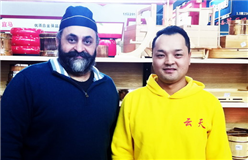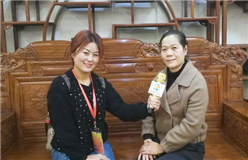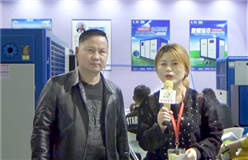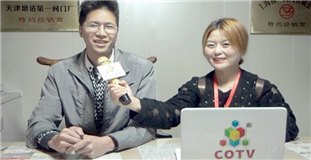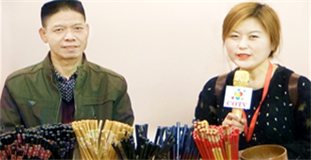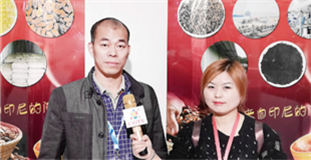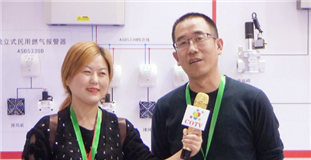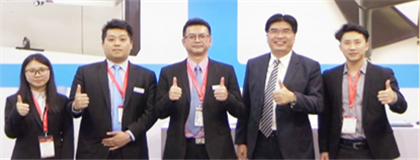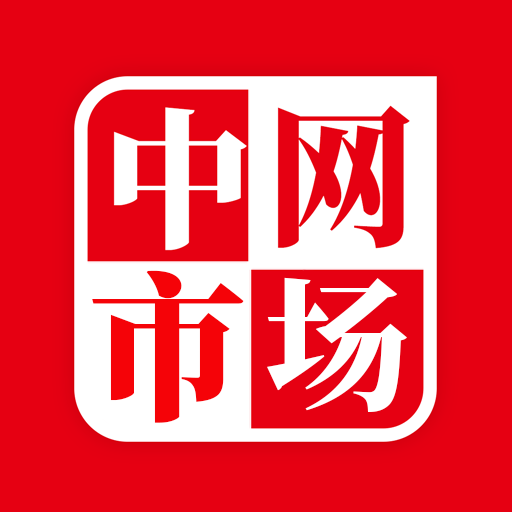Introduction
Printing goes through thousands of years. From engraving to lettering, from clay lettering to lead lettering, from laser typesetting to digital printing, their invention, development and application are all imbued with the wisdom and sweat of the Chinese nation for the spread of culture. In this long history and culture, in this splendid ancient civilization, generations of printers have left precious cultural heritage for the Chinese nation with their exquisite skills and wisdom. In order to carry forward Chinese culture, bear in mind the wisdom of printing sages, continue the creative spirit of their ancestors, and encourage future generations to work hard, on June 1, 1996, with the support of the party and the state, with the strong support of the printing industry in four places on both sides of the Taiwan Strait and other related industries, and with the joint efforts of the vast number of printing colleagues, the Chinese printing museum was officially built and opened to the outside world.
Printing includes art and Museum. Looking back over the past two decades, the Chinese Printing Museum has gradually grown up and become the largest professional printing Museum in the world, reflecting the human printing and publishing culture and the process of recording and inheriting Chinese ancient books. It comprehensively shows the origin, invention and development of Chinese printing. In order to let the audience feel the printing culture and spirit more cordially, China Printing Museum has carried out transformation and upgrading, built a digital museum, constantly improved its service capacity, enriched its collection, and promoted scientific research and construction. Bear in mind the history, explore and carry forward, build a home, inherit and spread, display the glorious deeds of the printing ancestors, and create the channels of innovation. Integrate modern elements to highlight the essence of today's printing culture. This is the charming Chinese Printing Museum.

Figure 1 China Printing Museum
I. participating in the grand event -- a brief introduction to the development of the Museum
Printing culture and printing technology is one of the quintessence of Chinese traditional culture, and also an important carrier of the inheritance of Chinese spiritual home at home and abroad. In June 1983, Mr. Wang Yi and Mr. Wang Fangzi moved to establish the China Printing Museum. In October 1991, Mr. Fan Muhan began to preside over the preparatory work. After five years, with the concern of the party and state leaders and the support of the former General Administration of press and publication, the China Printing Museum was officially opened to the public on June 1, 1996. Comrade Jiang Zemin personally wrote the name of the museum.
The establishment of the China Printing Museum is the result of the concerted efforts of the four compatriots on both sides of the Taiwan Strait, the care of leaders at all levels and the full support of all sectors of the society, and the great achievement of the printing industry on both sides of the Taiwan Strait. Whether in the process of preparation, or in the daily operation and management, from national leaders to ordinary printing enthusiasts, they all care about and support the work of the museum in various ways.

Figure 2 on December 4, 1992, Li Tieying and fan Muhan attended the foundation ceremony

Photo 3 leaders like Li Tieying attended the opening ceremony of the museum in 1996
A group of old comrades from the Preparatory Committee of the China Printing Museum and the Gu Committee, as well as the printing publishers from four places across the Straits, the China Printing Association, the China Printing Industry Association and people from all walks of life have made outstanding contributions to the construction and development of the China Printing Museum by overcoming many difficulties and making concerted efforts to build and assist with a sacred sense of historical responsibility and a high degree of cultural self-confidence. The 20-year history of China Printing Museum condenses the efforts and feelings of the elders and old experts, the persistence and persistence of the printer, and the support and contribution of all sectors of society. Mr. Fan Muhan, the leader of the preparatory work, was responsible for the establishment of China Printing Museum. Fu Xinian, Wang Xuan, qigong and the predecessors in the printing industry at home and abroad have contributed to the establishment of the Printing Museum by offering suggestions, donations and cultural relics.
The construction of China Printing Museum has always been concerned by the state leaders. In 1996, President Jiang Zemin and vice chairman Lei Jieqiong visited the exhibition area of "history of Chinese printing" set up by China Printing Museum in Beijing exhibition hall. When the museum was founded in 1996, Premier Li Peng wrote an inscription for the construction of the Museum: carry forward national culture, revitalize the printing industry, Ding Guangen, Li Tieying and other leaders visited the China Printing Museum accompanied by the leaders of the former press and publication administration. In 1999, Li Lanqing, former member of the Standing Committee of the Political Bureau of the CPC Central Committee and vice premier of the State Council, accompanied by Youxian, former director of the press and publication administration, Liu Qibao, Deputy Secretary General of the State Council, Zhou Yuanqing, Deputy Minister of education, visited the China Printing Museum and listened to the work report. On the 10th anniversary of the museum's construction in 2006, Liu Qi, then member of the Political Bureau of the CPC Central Committee, Secretary of the Beijing Municipal Party committee, and Wang Qishan, then mayor, visited the China Printing Museum. At that time, comrade long Xinmin, former director of the State Administration of press and publication, visited the Printing Museum. In 2015, Jiang Jianguo, then Secretary of the Party group of the State Administration of press, publication, radio, film and television, sun Shoushan and song Mingchang, members of the Party group, successively inspected the Printing Museum.

Fig. four in 1996, former president of the people 's Republic of China Jiang Zemin read the memorial book of the establishment of China Printing Museum and listened to the introduction of the staff

Figure 5: Li Lanqing, former vice premier, listened to the work report in the conference room of the Printing Museum in 1999
20 years of ups and downs, 20 years of spring and autumn. Indian Museum has developed into a professional museum with high reputation at home and abroad, and has made fruitful achievements in exhibition, collection, research and education. "Light of Chinese printing" brand exhibition footprint has been all over the world, and has won awards at all levels for many times; scientific research work has also made remarkable achievements, a number of topics and publications have won honors at all levels; the collection of treasures is also increasingly full. Inbo has been established as a national popular science education base, Beijing patriotism education base and national 3A level tourist attraction. In 2015, China Printing Museum won the title of "excellent national popular science education base".
2. Our printing, the printing of the world -- Exhibition in the Museum
As one of the four great inventions in ancient China, printing has greatly promoted the spread of knowledge and culture, and made an important contribution to the progress of human thought and science and culture. Therefore, people call printing "the mother of civilization".
The purpose of the construction of China Printing Museum is to carry forward the long and brilliant printing culture of the Chinese nation, to publicize the wisdom of the ancient people to all walks of life, and to educate the young people in patriotism. With the theme of printing technology, it displays the representative printing materials, printing technology equipment and related raw materials of previous dynasties, so as to show the important role of printing in the development of culture, the promotion of social progress, the dissemination of scientific knowledge, the development of production, the improvement of people's life and international cultural exchange.
With a total construction area of about 8000 square meters and exhibition area of about 6000 square meters, China Printing Museum is the largest professional printing Museum in the world. There are exhibition halls of ancient printing exhibition, modern printing exhibition, printing equipment exhibition, digital exhibition and temporary exhibition in our museum. Here, the audience can appreciate the world-famous scroll mounted Jingang Jing in Tang Dynasty, the spring and autumn Scripture biography in Southern Song Dynasty, the rotary typesetting plate invented by Wang Zhen in Yuan Dynasty, and the hand wrench rescued from the ruins of the commercial printing house destroyed by Japanese invaders in the song Shanghai war in 1932 Printing press on horse back used by jinchajiri newspaper, etc. The museum also has an interactive experience area where visitors can experience the ancient papermaking process and the engraving and typography process. In addition, the China Printing Museum has branches in Germany, Austria and Australia, with an exhibition area of nearly 700 square meters.
(I) basic exhibition of the Museum
1. Exhibition hall of ancient Chinese printing

Fig. 6 preface hall of ancient exhibition hall on the first floor
The exhibition hall of ancient Chinese printing is located on the first floor of the museum. It shows the historical process of the origin, development, inheritance and dissemination of ancient Chinese printing from the Neolithic Age to the Qing Dynasty with pictures, text descriptions and objects, and expounds the oriental legend of printing civilization.
The part of the origin of ancient printing mainly introduces the elements of the origin of printing: characters and paper, to understand the development of characters and the evolution of character carrier. It shows the technology of rubbing and stamping from the engraving symbols 8000 years ago to the Wei, Jin, southern and Northern Dynasties. The development of ancient printing is one of the key parts of museum display. The audience can appreciate the world-famous scroll of the Tang Dynasty Jingang Jing; the treasure of Zhenguan, Chunqiu Jing Zhuan and Anmin notice; the restored clay movable type invented by Bi Sheng in the Song Dynasty; the movable type wheel typesetting plate invented by Wang Zhen in the Yuan Dynasty. To show the audience that China is not only the inventor of block printing, but also the inventor of movable type printing and color printing. The audience can also carry out the engraving operation in person. The inheritance part of printing focuses on the World Cultural Heritage related to printing. In the communication part, we mainly show the external transmission route of Chinese printing through sand table, and tell the printing spirit of benefiting the world and being selfless.

Fig. 7 collection of spring and autumn classics in Song Dynasty
2. World modern printing exhibition hall
The world modern printing exhibition hall is located on the second floor of the museum, with an exhibition area of about 800 square meters. This exhibition hall is divided into three units: the introduction and development of modern printing technology, the rise and development of modern printing industry in China, printing and contemporary life. It shows the docking, blending and mutual learning of printing technology invented in China and modern Western printing technology in the 19th century, the rapid development of printing technology in the world, as well as digital printing, green printing and online printing Brush and other new concepts and technologies.

Figure 82 modern museum on the second floor
3. Printing equipment Museum
The printing equipment museum is located on the first floor of the museum, covering an area of 2200 square meters. It was completed in April 2001. From 1865 to the early 1990s, various types of pre press, printing and post press processing equipment were displayed in the museum. These equipment, donated by the printing industry at home and abroad, some of which are very rare at present. Among them, the early hand-held iron press, type casting typesetter and manual typesetter are included. The world's only double full sheet and double color offset press with a weight of 45 tons manufactured by Milly company of the United States in 1926 and the lithographic press produced in Austria in 1892.
Many machines quietly state the history of Printing Revolution. From these machines, we can touch the historical footprints, and we can feel the wisdom and sweat of our predecessors.

Figure 9 underground printing machinery and equipment Museum of China Printing Museum
(II) domestic tour
Cultural heritage and exchange should not only stay in the museum, but also actively go out and face the society. In recent years, the "light of printing" tour of China Printing Museum has spread all over the world. It has successively held exhibitions in Germany, Austria, the United States, Russia, Greece, the United Kingdom, Turkey, Sri Lanka, Serbia and other countries, as well as in many domestic municipalities, provincial capitals, Taiwan and Hong Kong, to fully show the people of our country and the world the long-standing invention and development of printing technology The glorious history of "carrying forward Chinese printing culture" is a solemn mission.
1. In December 1998, the "light of Chinese printing exhibition" was held in the exhibition hall of Hong Kong Cultural Center to celebrate the first anniversary of Hong Kong's return.
2. In September 1999, "printing boutique Exhibition" was held in the exhibition hall on the first floor of the museum to celebrate the 50th anniversary of the founding of the people's Republic of China.
3. In May 2000, he participated in the "24th International Museum Day" held at the Cultural Palace of the working people.
4. In April 2007, the special exhibition of "light of Chinese printing" was held at the 17th National Book Trade Fair in Chongqing.
5. In April 2008, the special exhibition of "light of Chinese printing" was held at the 18th National Book Trade Fair in Zhengzhou.
6. In April 2009, "light of Chinese printing" special exhibition was held at the 19th national book fair in Jinan.
7. In April 2010, "light of Chinese printing" special exhibition was held at the 20th National Book Fair in Chengdu.
8. In May 2011, the special exhibition of "light of Chinese printing" was held at the 21st National Book Trade Fair in Harbin.
9. In June 2011, in order to celebrate the 90th anniversary of the founding of the Communist Party of China, the China Printing Museum opened a large exhibition area in the museum and held a two-month "red printing exhibition".
10. On June 12, 2012, a brand new exhibition of "light of Chinese printing" highlighting ancient Xixia printing was launched at the 22nd Ningxia national book trade fair.
11. On April 19, 2013, China Printing Museum participated in the 23rd National Book Trade Fair held in Haikou City, and held the exhibition of "light of Chinese printing".
12. On September 12, 2013, "printing technology history exhibition" was held at China International Press and publication Technology Equipment Expo 2013 in Tianjin.
13. On September 24, 2013, "light of Chinese printing" exhibition was held during the 4th Changchun Book Fair and the first Changchun Reading Festival.
14. On August 1, 2014, "light of Chinese printing" exhibition was held at the 24th National Book Fair in Guiyang.
15. On September 25, 2015, "light of Chinese printing" exhibition was held at the 25th National Book Trade Fair in Taiyuan.

Picture 10 the long dragon in front of the woodblock printing performance stage of Chongqing book fair in 2007

Figure 11 2009 Jinan book fair, Shandong Province, the audience is full of interest in the "light of Chinese printing" Exhibition

Figure 12 the audience in line in the exhibition area of China Printing Museum of Shanxi book fair in 2015
(III) foreign exhibitions
Museum exhibitions are actively going abroad. Over the years, foreign exhibitions have made very good social repercussions.
1. On October 20, 2006, the "light of Chinese printing" exhibition sponsored by the China Printing Museum and co sponsored by Shanghai Donnelly Printing Co., Ltd., the American Asian culture center and the Chinese culture foundation was held in the Asian culture center in Manhattan, New York, USA.
2. Participated in the 20th Moscow International Book Fair on September 26, 2007.
3. On October 30, 2008, the "light of Chinese printing" exhibition opened in the exhibition hall of Australian and Chinese Museum in Melbourne.
In October 13th 4.2009, he attended the world's largest book fair, the sixty-first Frankfurt book fair. China's vice president Xi Jinping attended the opening ceremony of the theme pavilion.
5. On April 22, 2010, he participated in the 7th Salonica International Book Fair.
6. On April 18, 2012, he participated in the 41st China guest of honor event of London Book Fair held at the Earl's palace of London, which is the second largest international book copyright fair in the world after Frankfurt Book Fair. It is precisely at the 40th anniversary of the establishment of ambassadorial diplomatic relations between China and Britain that he attracted the world's attention.
7. On November 2, 2013, he participated in the 32nd Istanbul International Book Fair and successfully held the "exhibition of ancient Chinese publishing and printing".
8. On September 18, 2014, he participated in the China guest of honor activity of Sri Lanka International Book Fair 2014 held in Colombo.
9. On October 24, 2014, he participated in the China guest of honor activity of 2014 Serbia international Book Fair held in Belgrade.
10. On February 11, 2015, he participated in the Chinese guest of honor activity of the 22nd Minsk International Book Fair held in Minsk.
11. On May 27, 2015, he participated in the exhibition of Chinese ancient publishing and printing culture, which was successfully held at the Javits center in New York.
12. In January 2016, he participated in the event of China's guest of honor at the World Book Fair in New Delhi, India.

Photo thirteen Xi Jinping watches the exhibits of China Printing Museum in Frankfurt Book Fair 2009.

Figure 14 on September 5, 2007, Chen Zhili, vice chairman of the Organizing Committee of China Russia "year of the state", State Councilor of China (first from the front left), and Medvedev, the first vice premier of Russia (second from the front left), visited the woodblock printing technology exhibition at the Moscow International Book Fair

Figure 15 at the 2014 Sri Lanka International Book Fair, Jiang Jianguo, Party Secretary of the State Administration of press, publication, radio, film and television, and Sri Lankan children experience woodblock printing
(IV) exhibition hall outside the Museum
In addition to actively setting up exhibitions, and in line with the purpose of "going out" to promote Chinese printing culture, the Chinese Printing Museum has established good inter library relations with printing museums in Germany, South Korea, Japan, Austria and other countries at the beginning of its construction, and has set up a branch in the United States, Germany, Austria, respectively, in order to promote cultural exchanges between the East and the west, and promote international friendship Exchange and publicize Chinese printing culture and make contributions.
1. On April 15, 2000, at the invitation of the Gutenberg Museum in Germany, curator Tian Shengli and deputy curator Zhang Lianzhang of the Chinese Printing Museum participated in the celebration of the 600th anniversary of the birth of Gutenberg and the 100th anniversary of the establishment of the Gutenberg Museum. In the museum, a 100 square meter exhibition area of "the history of ancient Chinese printing" was specially set up to reproduce a large number of exhibits for long-term exhibition and build them abroad The first branch was set up.
2. In 2000, he toured and exhibited the invention history of ancient Chinese printing in the town of Austrian Palace benzek, and was invited to set up the exhibition in Vienna higher vocational college, the capital of Austria, for a long time, and built a second branch abroad.
3. On October 30, 2008, the large exhibition of "light of Chinese printing" opened in the exhibition hall of Australian and Chinese Museum in Melbourne. After that, all the exhibits remained in the museum for a long time, and a third branch was established abroad.
4. On July 4, 2013, an exhibition on the history of copper movable type printing of the Ming Dynasty was held in Dangkou ancient town, Wuxi, and an exhibition hall on the history of printing was established for the ancient town.

Figure 16 on October 30, 2008, the large exhibition of "light of Chinese printing" opened in the exhibition hall of Australian and Chinese Museum in Melbourne. Since then, all the exhibits have remained in the museum for a long time, and a third branch has been established abroad.
III. advocating, broadcasting, preserving history and educating people
As a national excellent science popularization education base, China Printing Museum not only does a good job in daily exhibition, but also actively innovates and develops abroad. We have made great efforts in social education, academic research, collection and other aspects. To educate people with material and history. Museums continue to deepen the study of ancient and modern printing, and explore the story behind the printing relics. Enrich the collection and strengthen education. Actively undertake the research of printing history, carry forward the light of Chinese printing, and create the glorious mission of Chinese printing culture.
(I) publicity and education
As an important platform for the publicity of Chinese printing culture, the Printing Museum has been actively focusing on the embodiment of the educational function of the museum in the construction of the museum. In the exhibition hall, many interactive games and videos have been designed to better show the cultural characteristics of printing. In addition, strengthen the construction of the museum's commentator team, tell the Chinese printing story well, let the audience take the printing story and the printing spirit home, and achieve internalization.
As a window of cultural communication to inspire the future, the China Printing Museum has always made the work of "patriotism education base" and "science popularization education work base" a key work project, actively participated in the activity of "one hundred science popularization docking with one hundred science popularization communities", formed a docking unit with the innovative science popularization community of Beijing City, formulated science popularization lectures and on-site visits, etc The "double base" of the National Printing Museum has remarkable social benefits.
On September 6, 1997, the Chinese printing museum was named "Beijing patriotism education base" by the Beijing Municipal People's government. In May 1998, China Printing Museum was named "Beijing popular science education base" by Beijing Joint Conference Office of science and technology popularization. In 2012, China Printing Museum was approved as the national science popularization education base.

Figure 17 in 2015, China Printing Museum won the title of "excellent national popular science education base"

Fig. 18 in 2008, the exhibition hall service of China Printing Museum was highly praised by the audience, and the golden banner sent by the audience was harvested
(II) academic research
As a professional museum in the field of printing, China Printing Museum has always attached great importance to the in-depth study of printing history, closely contacted with experts and scholars of printing industry at home and abroad, actively held and participated in the seminar of printing history, conducted in-depth exchanges and discussions on the theory and academic knowledge in the field of printing history, and compiled many volumes of papers. Among them, the Sixth China Printing History Seminar was held in our museum in 2006. In 2009, the Forum on printing history held at the International Book Fair in Frankfurt, Germany, with the theme of "two towers in the world's printing history" was particularly effective.
The museum has carried out many research projects. In May 2008, the project of "Research on Printing Technology of color Sakyamuni Buddha prints in Liao Dynasty" was launched. In addition, the research projects of "invention and development of Bi Sheng clay movable type printing", "content collection of online virtual museum", "Research on protection measures of Chinese printing cultural heritage", "empirical research on" stencil printing "in Qing Dynasty" were also carried out.

Figure 19 the mid-term summary meeting of "Research on the protection of cultural heritage in China's publishing industry"
(III) collection
The collection is the foundation of the museum. Strengthening collection of museum collections is also one of the primary tasks of museum construction. Since its establishment, the museum has received donations from many friends at home and abroad. Many units and individuals have donated collections to the museum.
Many of the museum's precious collections were donated by the museum's advisory expert committee and some well-known social figures, such as Qigong, Huangzhou, fuxinian and other comrades. In order to enrich the collection, the museum also actively contacts the collection. From pottery, scriptures and ancient and modern typefaces, typography and printing equipment of historical value, a complete set of printed books, such as the great book "the great collection of scriptures" donated by Cultural Relics Publishing House, were imported into the museum. In 2005, with the support of the General Administration of press and publication and the State Administration of cultural relics, comrades of the Advisory Committee of the museum participated in the auction, and the song version of Chunqiu jingzhuan, which had been auctioned, was included in the Chinese Printing Museum as the treasure of the town hall. The collection work was actively supported by the superior leaders. With the help of the General Administration, it obtained a replica of Dawenkou cultural pottery statue in Shandong Province in 2015, which included the earliest Chinese characters in the museum.

Figure 20 in 2015, China Printing Museum obtained the replica of Dawenkou pottery statue donated by Shandong press, publication, radio and television
General secretary Xi Jinping pointed out that the diligent and intelligent Chinese people invented papermaking and movable type printing, these two great inventions, which even made the Chinese culture with a long history and extensive and profound culture spread widely, and made Chinese culture communicate with the world and spread to the world. The establishment of China Printing Museum bears the dream of many generations of Chinese printing workers, and is the result of the joint efforts of numerous enthusiasts at home and abroad. It takes inheriting and carrying forward the excellent Chinese printing culture as its mission, and is committed to fully displaying the glorious history of the invention, development and dissemination of Chinese printing to the people of the world. In the future, the Chinese printing museum will make great efforts to play its role and contribute to the construction of a better home for Greater China.
Bus Line
Metro: exit a of Qingyuan Road Station of Metro Line 4 outside South Fifth Ring Road
Bus: 410, 456, 631, 829, 841, 940, 954, 968, 969 Qingyuan Xili station
Self driving: drive southward along Huying bridge, the second ring road in the southwest to the exit of the second exit, jinhuasi (Huangcun, Daxing city), turn right on the auxiliary road and go straight for 800 meters
Location
Disclaimer
The information on this site comes from the network and related members, and the website has done its duty to review it. Due to the uncontrollability of the process of organizing the exhibition, some of the exhibition information in the station may change the subject matter, Extending or cancelling the event, please exhibitors and visitors must check with each other again before exhibiting! All the exhibitions in this site are not hosted / co-organized or organized, if there are any disputes during the exhibition, please hold the main responsibility of the exhibition organization! QQ Email: 523138820@qq.com WeChat: 523138820 Mobile: 15313206870
Hot Exhibitions
-
- 2025 Shenzhen International Industrial Control and Instrumentation Exhibition
- 2025-08-26 To 08-28
- No.1 Zhancheng Road, Fuhai Street, Bao'an District, Shenzhen
-
- 2023 Ningbo International Lighting Exhibition (May 8-10)
- 2023-05-08 To 05-10
- No. 181, Huihui Road, Yinzhou District, Ningbo City, Zhejiang Province
-
- Welcome to the 2026 Shenzhen International Semiconductor Exhibition [Official Website] Semiconductor Equipment and Materials Exhibition!
- 2026-04-09 To 04-11
- Intersection of Fuhua 3rd Road and Jintian Road, Futian District, Shenzhen, Guangdong Province
-
- 2026 Zhengzhou International Environmental Protection Expo and China Central Green and Low Carbon Expo
- 2026-05-16 To 05-18
- Northeast corner of the intersection of Binhe East Road and Exhibition Fifth Road in Zhengzhou Airport District, Henan Province
-
- 2026 China Daily Necessities Exhibition - Shanghai Daily Necessities Exhibition, China
- 2026-07-23 To 07-25
- No. 2345 Longyang Road, Pudong New Area, Shanghai
-
- 2026 China (Shenzhen) International Transparent Materials Exhibition
- 2026-06-10 To 06-12
- No.1 Zhancheng Road, Fuhai Street, Bao'an District, Shenzhen
-
- 2026 East China Import and Export Fair - International China International Fair
- 2026-03-01 To 03-04
- No. 2345 Longyang Road, Pudong New Area, Shanghai
-
- The 6th East China International Pet Products Exhibition and China Pet Industry E-commerce Trade Fair in 2025
- 2025-10-24 To 10-26
- No. 353 Benjing Avenue, Qianjiang Century City, Xiaoshan District, Hangzhou City
-
- 2025 China (Yuhuan) International Auto Parts Fair
- 2025-10-29 To 10-31
- 150 meters northwest of the intersection of Xuangang Road and Provincial Highway 226 in Yuhuan City
-
- 2026 China International Plastics Exhibition
- 2026-10-28 To 10-30
- No. 5 Bailongjiang West Street, Nanjing City, Jiangsu Province (North Gate)/No. 300 Jiangdong Middle Road, Nanjing City (East Gate)
Expo News
- Frankfurt Exhibition Group announced its turnover in 2018, breaking a new record
- "Ispo Beijing" 15th Beijing winter sporting goods exhibition opens
- 2024 Shanghai International Smart City, Internet of Things, Big Data Expo (Shanghai Smart Expo)
- Why did domestic and foreign companies choose Shanghai Wedding Dress Exhibition as their new product launch site?
- The 27th Shenzhen Auto Show has come to a successful conclusion
- SMART FACTORY Expo in the Japanese industrial sector
- 2024 China International Electronic Chemicals and New Materials Exhibition
- 2025 Yangtze River Delta International Emergency Disaster Reduction and Rescue Expo
- "Post Exhibition Review" Metallurgy India
- Chengdu Environmental Protection Exhibition Joins Hands with ECOMONDO for the First Time, Quickly Moving towards Internationalization
- The Yiwu Import Expo has come to a successful conclusion, with a transaction volume of 270 million yuan on site
- More than 40000 professional buyers have chosen, and the 2019 Shanghai Ferment Expo will open in September
- The "Guangzhou Health Products Exhibition" has concluded perfectly, with the exhibition scale breaking past records
- The most suitable characteristic exhibition area for Chinese enterprises at the Birmingham Autumn Consumer Goods Exhibition is here!
- The 2024 World Robotics Conference will be held in Beijing in August
- Türkiye's household goods industry expects export growth of 15% in 2019
- The 2024 Fluid Machinery Exhibition will be held in Shanghai in November
- AUTO TECH 2024 Guangzhou International New Energy Vehicle Power Semiconductor Technology Exhibition booth reservation is in progress
- 2024 Vietnam Pingyang International Battery Products Exhibition
- The 2024 North China Hospital Information Network Conference will be held in Beijing in April
- The 2024 Salt Expo will be held in Shandong in May
- 2024 North China Hospital Information Network Conference
- In the year of the Dragon, seize the opportunity to attract investment in spring and attend the Beijing Health Expo in April 2024
- 2024 Shenzhen International Intelligent Security Exhibition
- 2024 Haikou International New Energy and Intelligent Connected Vehicle Exhibition Opening

















